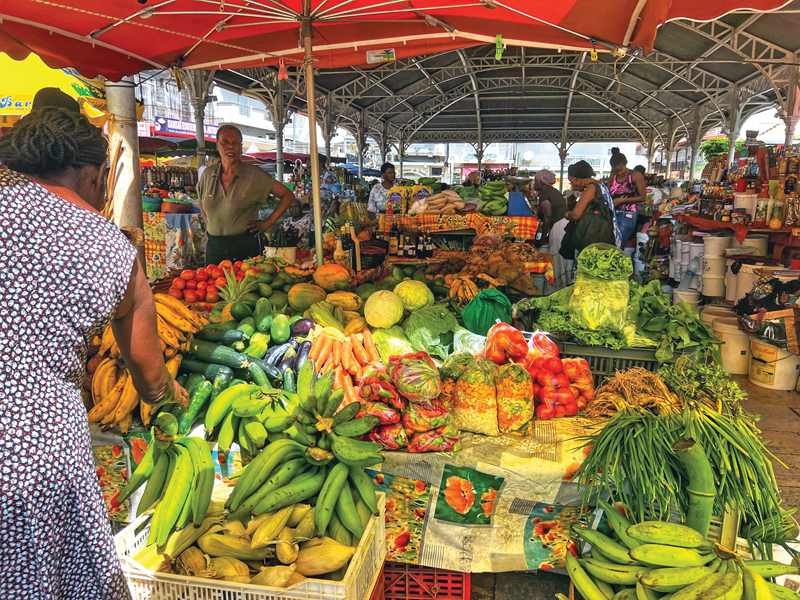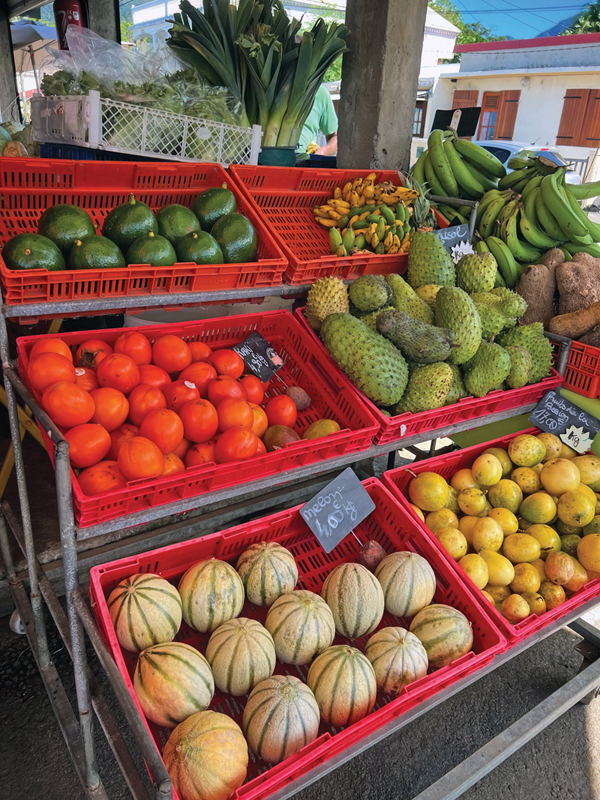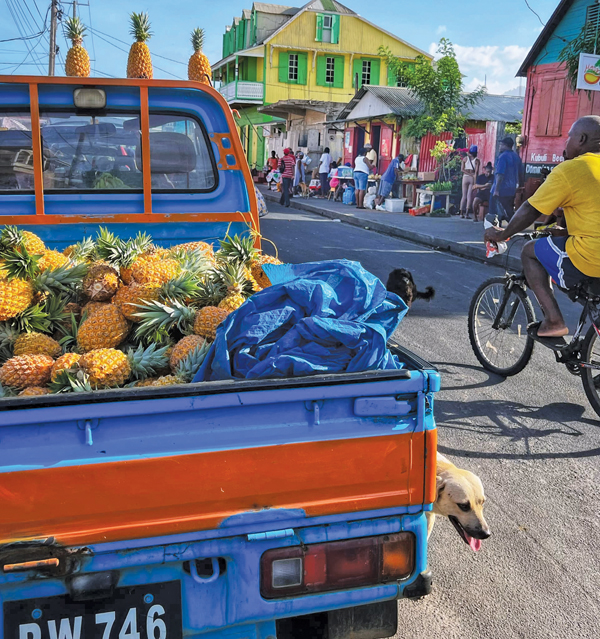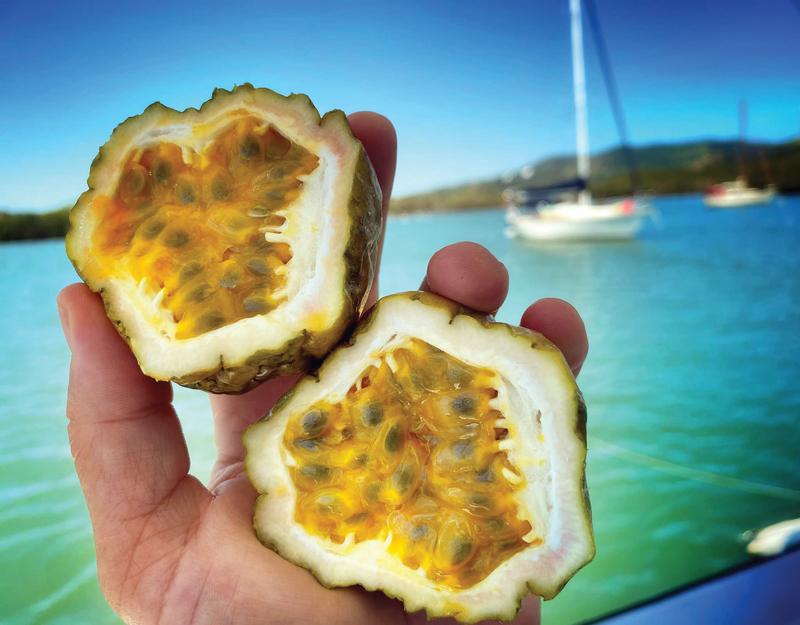Provisioning can be a treasure hunt for food, glorious food.
Provisioning is important. If your crew is eating well, you’ll avoid a mutiny. That’s salty common sense which holds true no matter where you sail. Once you leave the convenience and privilege of American grocery stores, getting food turns into a chore, and getting “good food” turns into a treasure hunt.

It’s true that people eat all over the world, so if there are people living in the place where you anchor your boat, there will be food to eat. Universally you can find shelf stable basics all over the Caribbean and Central America, things such as rice, beans, pasta, canned tomatoes, flour, sugar, salt, boxed UHT milk, oil, vinegar, canned fish, mayonnaise, and of course, some sort of booze.
Other food staples are on the “sometimes” list, such as peanut butter, tortillas, deli meats, frozen meats, yogurt, granola, or popcorn. When you come across these things in a shop, and you haven’t seen them in a while, stock up! Who knows when peanut butter will come again? Buy four or five jars and stash them away for peanut butter emergencies on uninhabited islands.

Meet and cheese
Because our crew is from the United States, we’re always thinking about meat and cheese. As we strayed farther from home, we quickly learned to appreciate American ranchers and the FDA. Many island markets don’t stock any items that require refrigeration, so you must go farther into a large town or go without if you need ground beef, chicken, or pork chops. Some markets will have a small freezer in the back, and you dig through using your wits to decide how old it is or where it came from. If you love good deli meat, that’s also hard to find. There always seems to be some mysterious, protruded ham-like offering, along with salami.
Cheese is a very sensitive topic with my crew. My kids put cheese on everything. We found out as we left the States three years ago that while you can find “cheese” everywhere, it’s not the bougie cheddar and aged parmesan that our taste buds love. Sometimes you’ll find a small bag of shredded Kraft for the price of a really good bottle of wine. Sometimes you get a log of something resembling Velveeta. And when you sail into the French islands in the Caribbean, you’re suddenly in cheese nirvana. Not only can you find all the cheeses you’re used to as an American, but you get so much more. It’s all magnifique. There’s a hand-drawn joke that gets passed around cruisers in the French Caribbean. It shows a stick figure that’s labeled “Before the French islands.” Next to him is a roly-poly balloon version of a stick figure holding a piece of cheese that’s labeled, “After the French islands.”

Fruits and vegetables
Except for the Bahamas, where they don’t grow their own food, you can find fresh fruits and veggies everywhere. Don’t expect any berries or cherries, or greens like spinach or kale, but foods like onions, garlic, tomatoes, carrots, potatoes, and cucumbers are always around. As are bananas, pineapples, and mango when in season. Papayas are pretty universal too.
Apples and oranges are imported and generally easy to find, but the fun part is trying what’s local and fresh. Dragon fruit, guava, starfruit, and passion fruit are cheap and plentiful, but sometimes different islands will have different names for the same fruit. In the Dominican Republic, passion fruit is called chinola, but next door in Puerto Rico it’s called parcha.
My kids like to joke about what they call “mystery citrus.” In the Eastern Caribbean, many of the citrus fruits all take on the same green-ish, round-ish appearance. You often don’t know what it is until you cut into it. Surprise, it’s an orange... or a lemon, or a grapefruit. Staples such as taro, yuca, plantain, mamey, chayote, cherimoya, and batata may all look new to Americans. Look up recipes and give them a try. Better yet, ask the people selling them to you for some home-cooking ideas.

What to stash before leaving the States
There are foods you just shouldn’t expect to find at all, and those are the things to stock up on before leaving the U.S. We stashed goodies such as sundried tomatoes, pesto, maple syrup, specialty sweets (plan ahead for the holidays), chocolate chips, canned soup, sparkling water, drink mixes, dried fruit, and special sauces. If you’re loyal to a certain kind of beer or booze, stock up on that, too. Lite beers and local rum are universal, but name brands will be hard to find. Most of the things you love about Trader Joe’s, you won’t find down in the islands, which is why the best treat is when a friend flies in from the states and brings a care package of food goodies!

New favorites
The flip side to this gastronomical treasure hunt is that you discover new favorites that you never knew existed. We made it a tradition to pick up a few new mystery items in each country, from cookies to chips to juices. French dark chocolate cookies and Dutch peanut-butter-flavored Cheeto-type snacks were some surprise favorites. You need to approach multi-country provisioning with an open heart, a strategic mindset, and a strong tummy. You may not always get what you want, but you won’t sail away hungry. One day, when we return to the US, I know I’ll miss having my pantry filled with goods labeled in at least four different languages.
By Cindy Wallach
About the Author: Longtime SpinSheet columnist Cindy Wallach is cruised the Caribbean with her family and two dogs aboard their St. Francis 44 catamaran Majestic, which is for sale. Learn more at majesticstfrancis44forsale.com.




